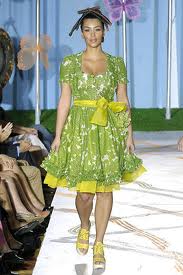Tactics-palooza.
I read in the paper paper this weekend about O.K.R.s, which stands for Objectives and Key Results. The measures, espoused by VC general John Doerr, were developed by Intel and, supposedly, are used by Google. The idea is that “the whole company and every group has one objective and three measureable key results.” Whether the objective and results are the same across the company is unknown, but I’ll look into it. Focus is important. And strategic.
What I do know is that this O.K.R. approach nicely mirrors the schema I use for brand planning: one powerful branding idea, supported by three brand planks – the collective power of which is unique to the market and business-winning for the brand.
ROS
Return on Strategy (ROS) is the antidote for ROI. While the latter focuses on marketing transaction payout and marketing tactics, ROS works to measure strategy against key business indicators (sales, share, retention, quality, employees). As we enter the marketing landscape, here referred to as “tactics-palooza,” we need to more and more measure strategy. Peace it up!





